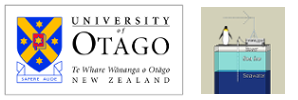Site Deployment - 30 June 2016
For the site deployment to be successful various components needed attention. This included determining the location of the sea ice probe deployment and testing of all the equipment prior to deployment.
Prior to Deployment
The probe, data multiplexor and telemetry equipment had arrived on the plane on 8 June. We first assembled the equipment inside one of our science labs at Scott Base at 2 pm on Friday, 17 June. Two hours later we disconnected the probe and moved everything outside where we reconnected the probe. The data started streaming in, confirming that every aspect of the assembly was in order and the system was working.
That evening we sent the following confirmation email to the science team at the University of Otago:
“The probe is left in its protective cylinder which is stood upright outside, with the bottom touching the ground and the top being about 40 cm above a metal walkway that was constructed at the back of the Hillary Field Centre earlier this season. It is tied with strops to metal railing and securely fastened.
The box (on the “table”) and the antenna are both also fastened to the metal railing and positioned on the metal walkway, with the antenna is pointing towards Crater Hill. I have just checked loggernet and it appears that the data is coming through as expected.”
The trial setup just outside Scott Base allowed us to check the assembly regularly, and in different weather conditions, while keeping an eye on the data. It allowed for communications with the science team in New Zealand about data that appeared to be outside of the expected range, clarify issues, and gave the science team confidence in the assembly team in Antarctica.
Determining the location for the sea ice probe
Together with the scientists, our winter field support, Dr. Becky Goodsell, determined the area for the best possible location of the probe. Exact position is dependent on accessibility and sea ice thickness, so cannot be predetermined. Video footage taken by film maker Anthony Powell since summer on how, when and where the sea ice had formed helped inform the decision-making. In addition Anthony provided aerial footage of the iceshelf / sea ice transition over a long stretch along the ice shelf edge. That information was crucial for determining the best access route to the determined probe location.
It was comforting to have Becky involved as she is also the winter search and rescue (SAR) lead. The SAR team was involved in ensuring the probe site can be accessed in a safe manner. They had to do a few route finding trips out in the dark. Some of these ended in dead ends when met by a crack in the sea ice too wide to cross, even with bridging timbers. The McMurdo SAR team was also on stand-by during those trips.
Deployment
The brief given to the on-ice team was “If the sea ice is more than 1.3 m thick, keep going until it gets thin enough” made me very nervous. The first thought that crossed my mind when I heard this was: and when we find ourselves swimming, we know we have gone too far?
A safe work and recreation (SWAR) form helps to ensure all possible risk factors are considered appropriately, and addressed as required. This includes determining both the likelihood and consequence of each risk factor. Any mention of having to evacuate when floating in Antarctic waters made me incredibly uneasy, as I would not expect to last any time at all in -1.8 °C waters.
The sea ice probe was deployed on 30 June 2016. At this time of the year it is pitch black outside 24/7. So we had to rely on the Hägglunds’ headlights and head torches to be able to see what we were doing.
There was no redundancy in the team; everyone had their role and was needed for smooth deployment. With outside temperatures of around -40 °C, time is of the essence, because as soon as you are outside of the relative warmth of the vehicle, you start becoming hypothermic. We had talked through everyone’s roles before departure, so that once we got to the site it all worked like clockwork.
Dr. Ursula Jewell, Antarctica New Zealand Scott Base Science Technician, 2015/16 Field Season
See below for a map showing the route taken to deploy the mass balance station.

